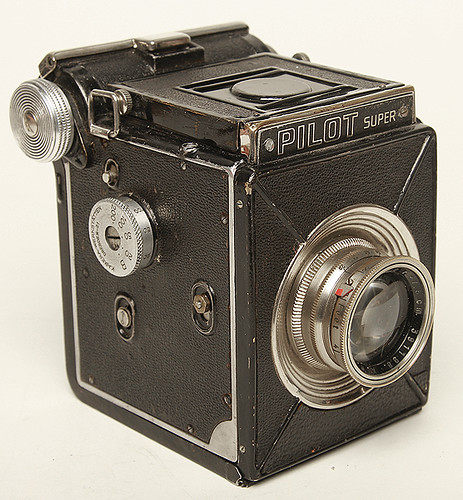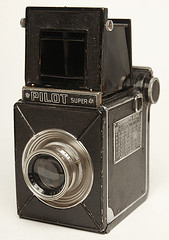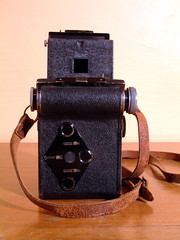Difference between revisions of "Pilot Super"
m (Added a couple of extra links in the text) |
m |
||
| Line 19: | Line 19: | ||
* [[Enna]] Ennatar 1:4.5 or 1:3.5, F=7.5 cm | * [[Enna]] Ennatar 1:4.5 or 1:3.5, F=7.5 cm | ||
* [[Laack]] Pololyt 1:3.5 F=8 cm | * [[Laack]] Pololyt 1:3.5 F=8 cm | ||
| − | All of these are simple, uncoated triplet lenses. It is possible that Wartime supply restrictions prevented a higher-specification standard lens being offered. In both of the examples pictured, the focus scale is in feet | + | All of these are simple, uncoated triplet lenses. It is possible that Wartime supply restrictions prevented a higher-specification standard lens being offered. In both of the examples pictured, the focus scale is in feet. |
The focusing screen does not have a [[Fresnel lens |fresnel screen]], and is rather dark, especially since the aperture control is manual (so final framing of hand-held photographs must be done after stopping down). | The focusing screen does not have a [[Fresnel lens |fresnel screen]], and is rather dark, especially since the aperture control is manual (so final framing of hand-held photographs must be done after stopping down). | ||
Revision as of 00:13, 17 February 2011

|
| Pilot Super image by Rick Soloway (Image rights) |
The Pilot Super is a medium format SLR camera made by KW in Dresden, Germany, from c.1939-1941[1], during the period that the company was owned by Charles Noble. It takes twelve 6×6cm exposures on 120 film, and can be converted to take sixteen 4.5×6 frames with an extra mask. It is a later version of the Pilot 6, using a similar chassis.
The body is roughly cubic, with a bulge on the top rear edge accommodating the film take-up spool. There is a folding viewfinder hood on top, with a built-in sports finder and loupe. The film advance knob, shutter speed control and shutter-release are all on the right-hand side. Some examples are fitted with an extinction light meter on the viewing hood; there is then a table by which to interpret the meter reading, together with the depth-of-field table.
The shutter is a guillotine mechanism with 4 speeds, 1/20-1/200 + B. It is manually cocked by winding the speed control knob. The camera has a basic double-exposure prevention interlock, and a button to override it (above the shutter speed control). It has a socket for a cable release. There is no delayed action.
The lens is interchangeable, with a 31 mm thread. However, no example has been seen with other than a standard lens. Available lenses included:
All of these are simple, uncoated triplet lenses. It is possible that Wartime supply restrictions prevented a higher-specification standard lens being offered. In both of the examples pictured, the focus scale is in feet.
The focusing screen does not have a fresnel screen, and is rather dark, especially since the aperture control is manual (so final framing of hand-held photographs must be done after stopping down).

|
| Pilot Super with open finder hood image by Rick Soloway (Image rights) |

|
| Rear view, showing red window cover image by Dustin McAmera (Image rights) |

|
| Top view: loupe and extinction meter image by Dustin McAmera (Image rights) |
Notes
Links
- KW cameras at Simon Simonsen's retrography.com includes the Pilot 6
- KW history shows the KW SLRs, by Klaus-Eckard Riess